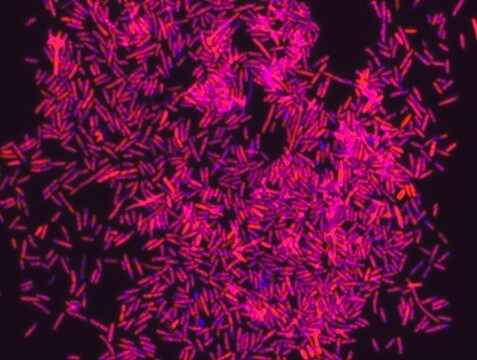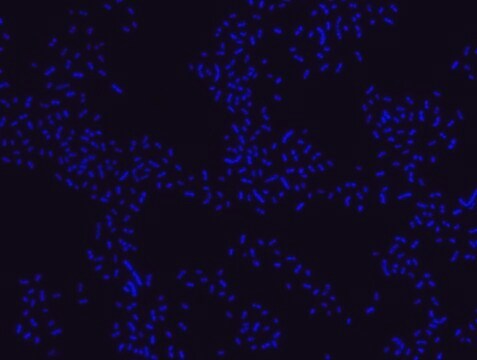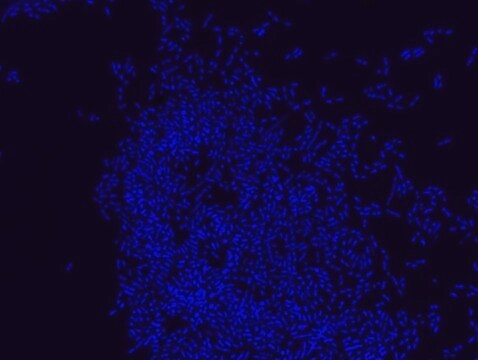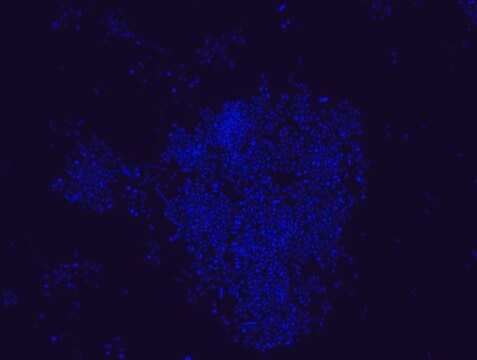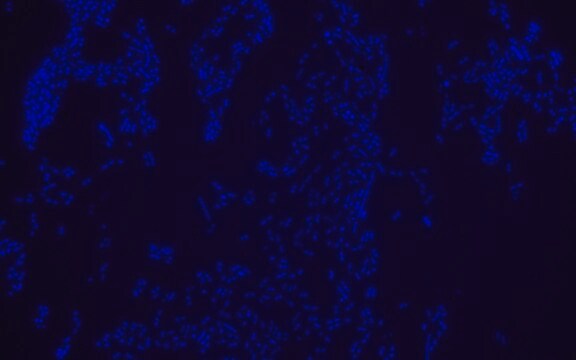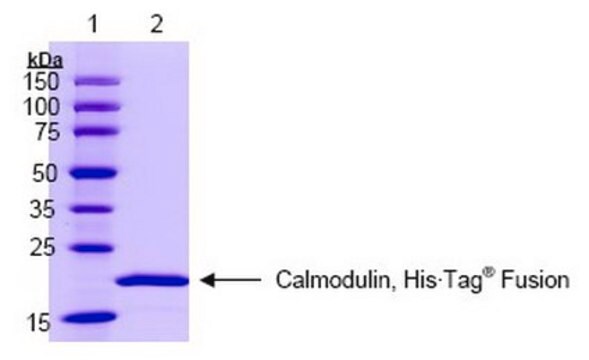MBD0047
Enterococcus faecium FISH probe – ATTO 488
Probe for fluorescence in situ hybridization (FISH), 20µM in water
Sign Into View Organizational & Contract Pricing
All Photos(3)
About This Item
UNSPSC Code:
41105500
NACRES:
NA.54
Recommended Products
Quality Level
technique(s)
FISH: suitable
fluorescence
λex 504 nm; λem 521 nm
shipped in
dry ice
storage temp.
−20°C
General description
Fluorescent In Situ Hybridization technique (FISH) is based on the hybridization of fluorescent labeled oligonucleotide probe to a specific complementary DNA or RNA sequence in whole and intact cells. Microbial FISH allows the visualization, identification and isolation of bacteria due to recognition of ribosomal RNA also in unculturable samples. FISH technique can serve as a powerful tool in the microbiome research field by allowing the observation of native microbial populations in diverse microbiome environments, such as samples from human origin (blood and tissue), microbial ecology (solid biofilms, aquatic systems) and plants. It is strongly recommended to include positive and negative controls in FISH assays to ensure specific binding of the probe of interest and appropriate protocol conditions. We offer positive (MBD0032/33) and negative control (MBD0034/35) probes, that accompany the specific probe of interest. Enterococcus faecium probe specifically recognizes E. faecium cells,. E. faecium a gram-positive bacterium and is a cause of a variety of infections, including endocarditis, urinary tract infections, prostatitis, intra-abdominal infection, cellulitis, and wound infection as well as concurrent bacteremia. Studies have shown that E. faecium is highly resistant to multiple antibiotics and that vancomycin-resistant Enterococcus faecium (VRE) can be asymptomatically carried by healthy people, which can hamper hospitals’ attempts to control the spread of the bacteria. Over the past two decades, Enterococcus faecium has emerged as a leading cause of multidrug-resistant enterococcal infection in the United States. E. faecium has a high antibiotic-resistance with more than half of its pathogenic isolates expressing resistance to vancomycin, ampicillin, and high-levels of aminoglycosides.
Application
Probe for fluorescence in situ hybridization (FISH), recognizes Enterococcus faecium cells
Features and Benefits
- Visualize, identify, and isolate E. faecium cells.
- Observe native E. faecium cell populations in diverse microbiome environments.
- Specific, sensitive, and robust identification of E. faecium in bacterial mixed population.
- Specific, sensitive, and robust identification even when E. faecium is in low abundance in the sample.
- FISH can complete PCR based detection methods by avoiding contaminant bacteria detection.
- Provides information on E. faecium morphology and allows to study biofilm architecture.
- Identify E. faecium in clinical samples such as tumor and brain tissues (for example in formalin-fixed paraffin-embedded (FFPE) samples), saliva and oral cavity and medical equipment such as dental implants and voice prostheses.
- The ability to detect E. faecium in its natural habitat is an essential tool for studying host-microbiome interaction.
Storage Class
12 - Non Combustible Liquids
wgk_germany
WGK 1
flash_point_f
Not applicable
flash_point_c
Not applicable
Choose from one of the most recent versions:
Certificates of Analysis (COA)
Lot/Batch Number
It looks like we've run into a problem, but you can still download Certificates of Analysis from our Documents section.
If you need assistance, please contact Customer Support.
Already Own This Product?
Find documentation for the products that you have recently purchased in the Document Library.
Our team of scientists has experience in all areas of research including Life Science, Material Science, Chemical Synthesis, Chromatography, Analytical and many others.
Contact Technical Service